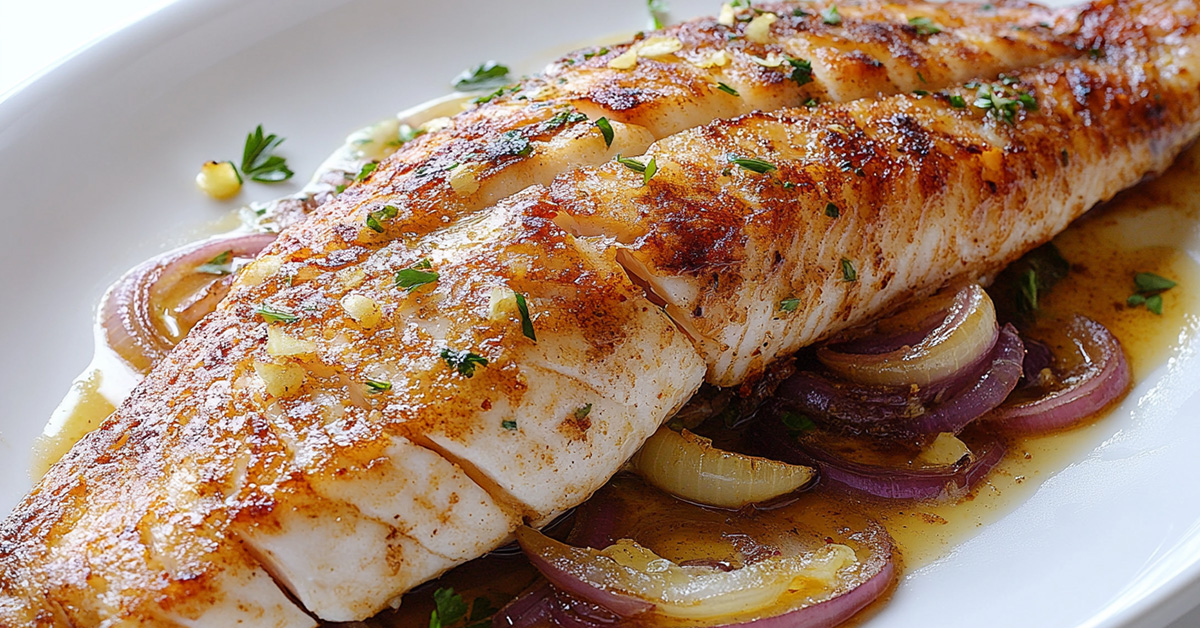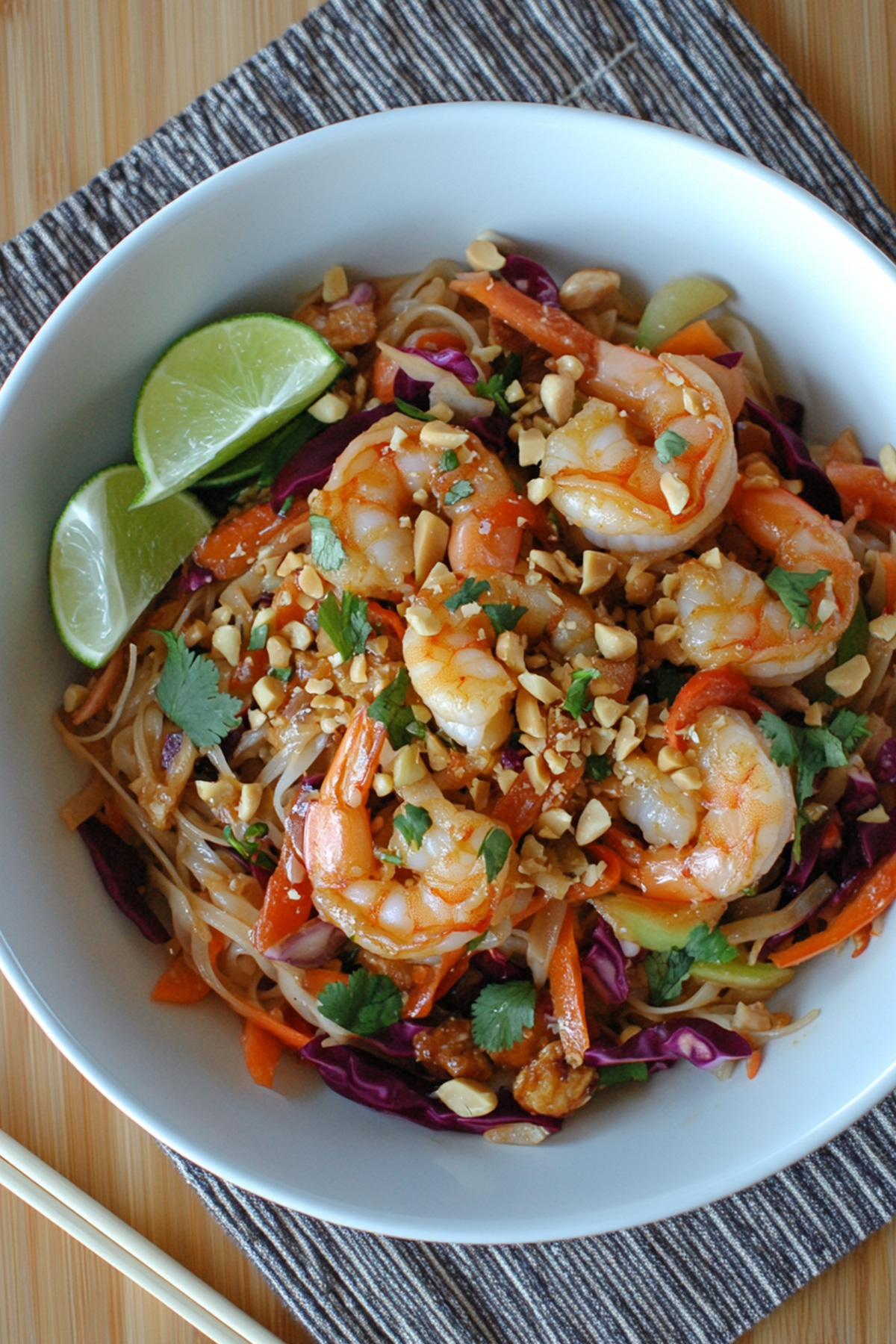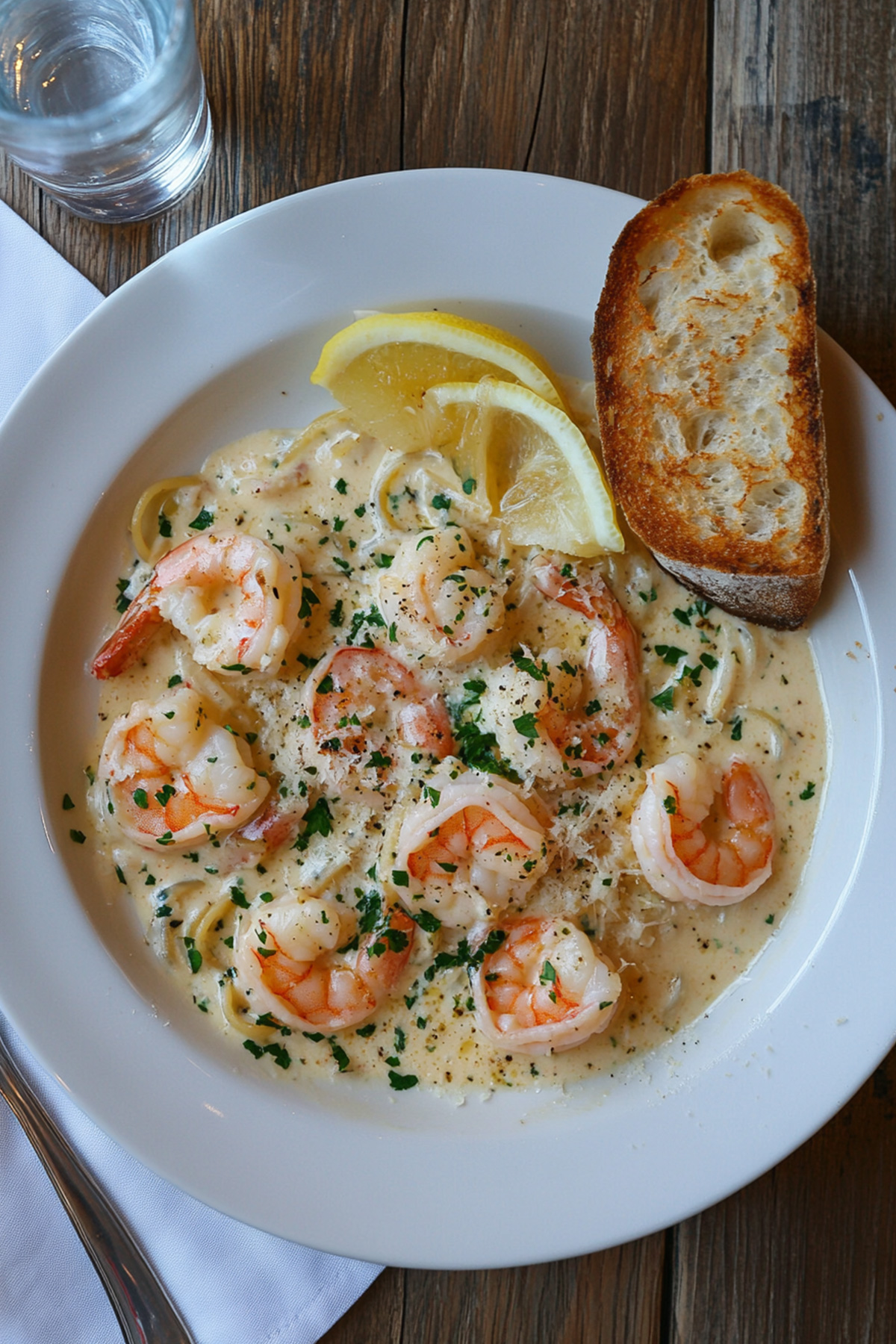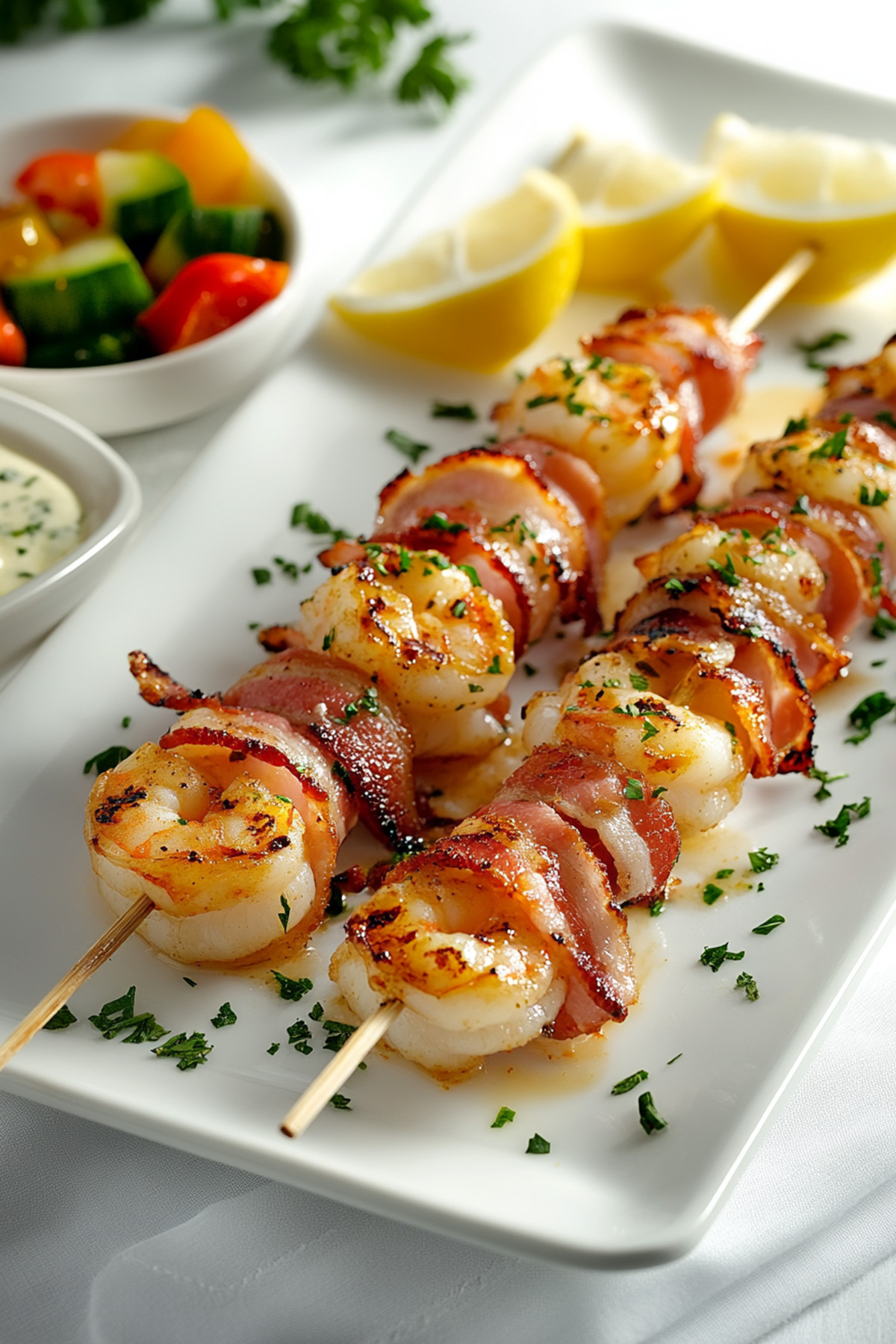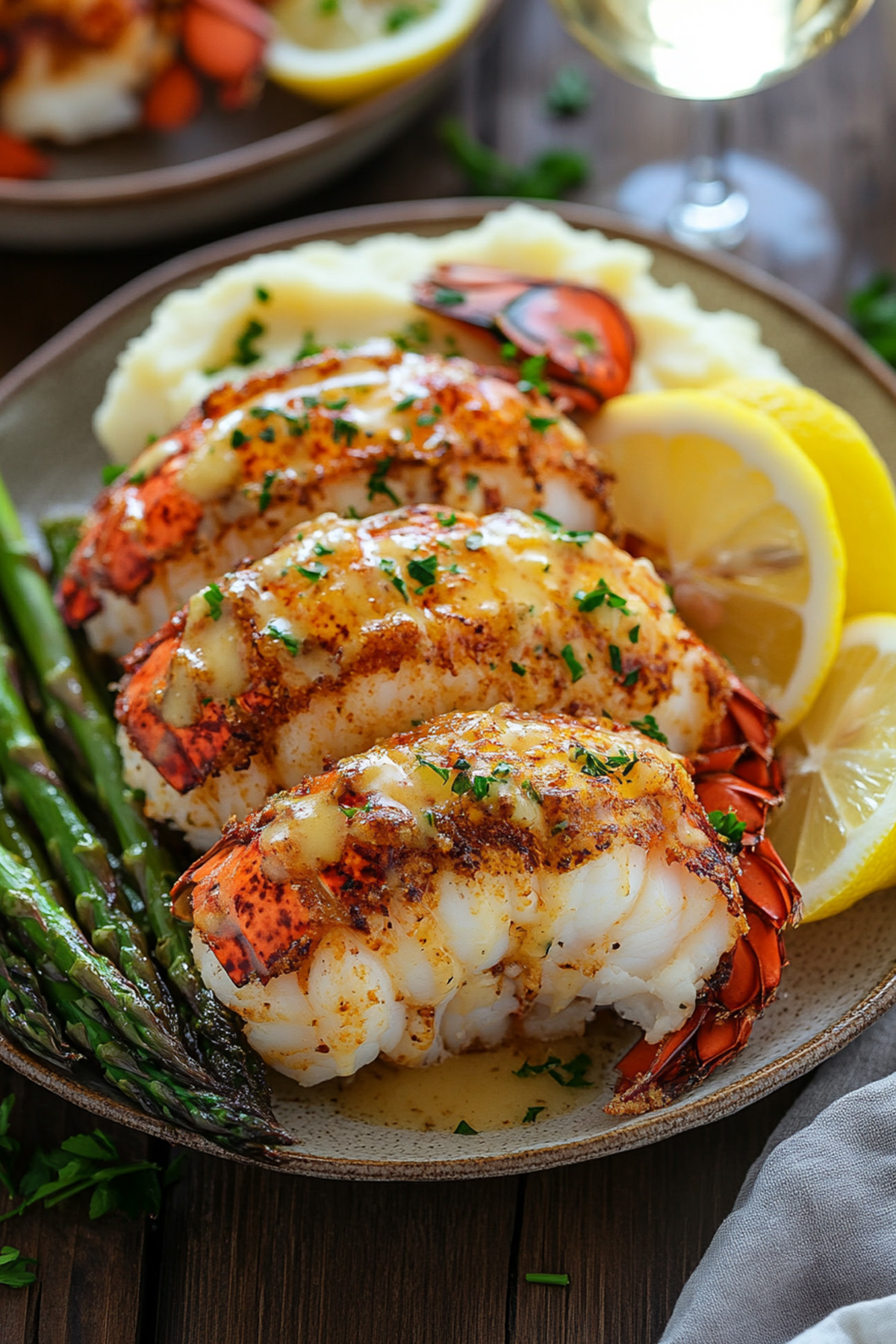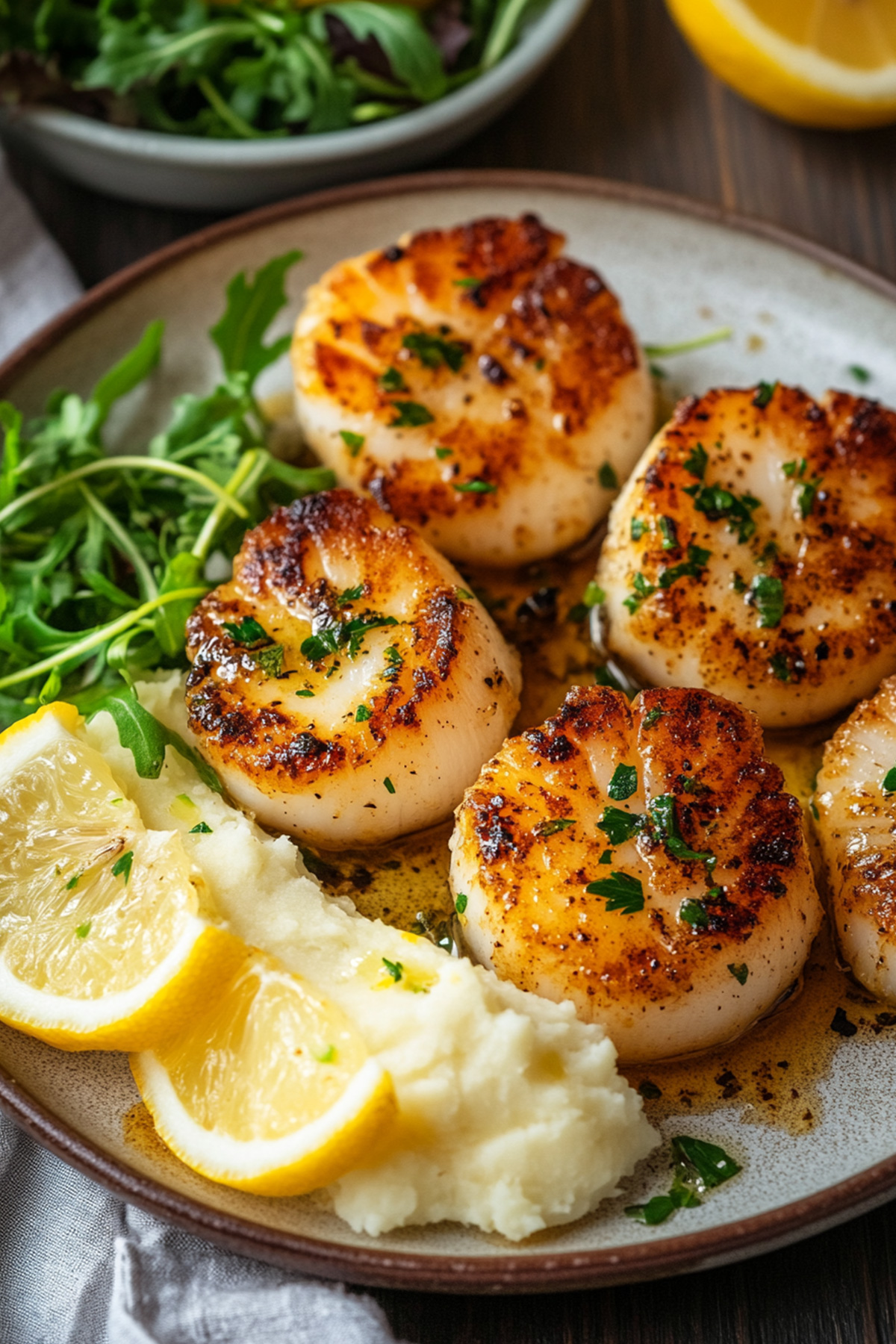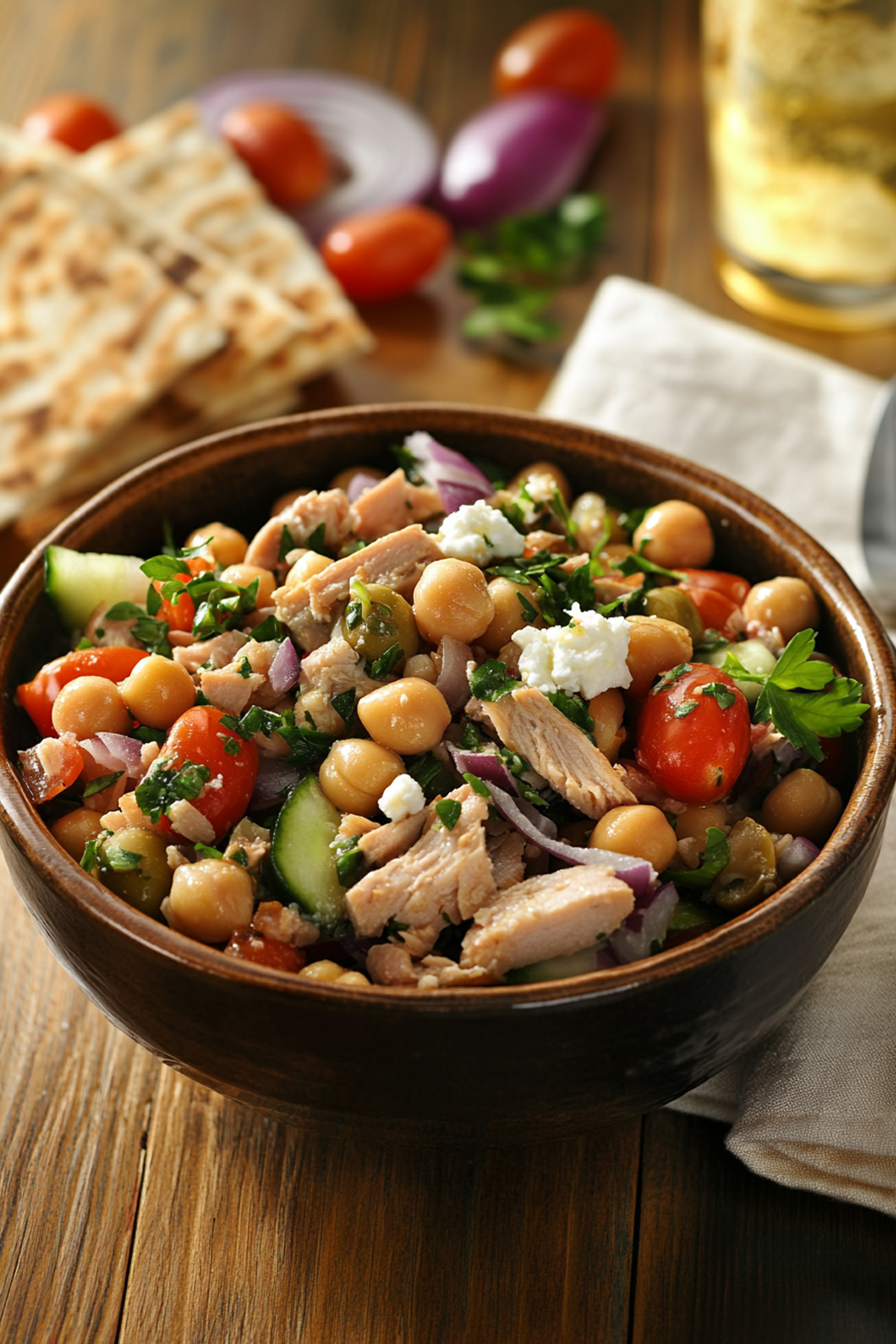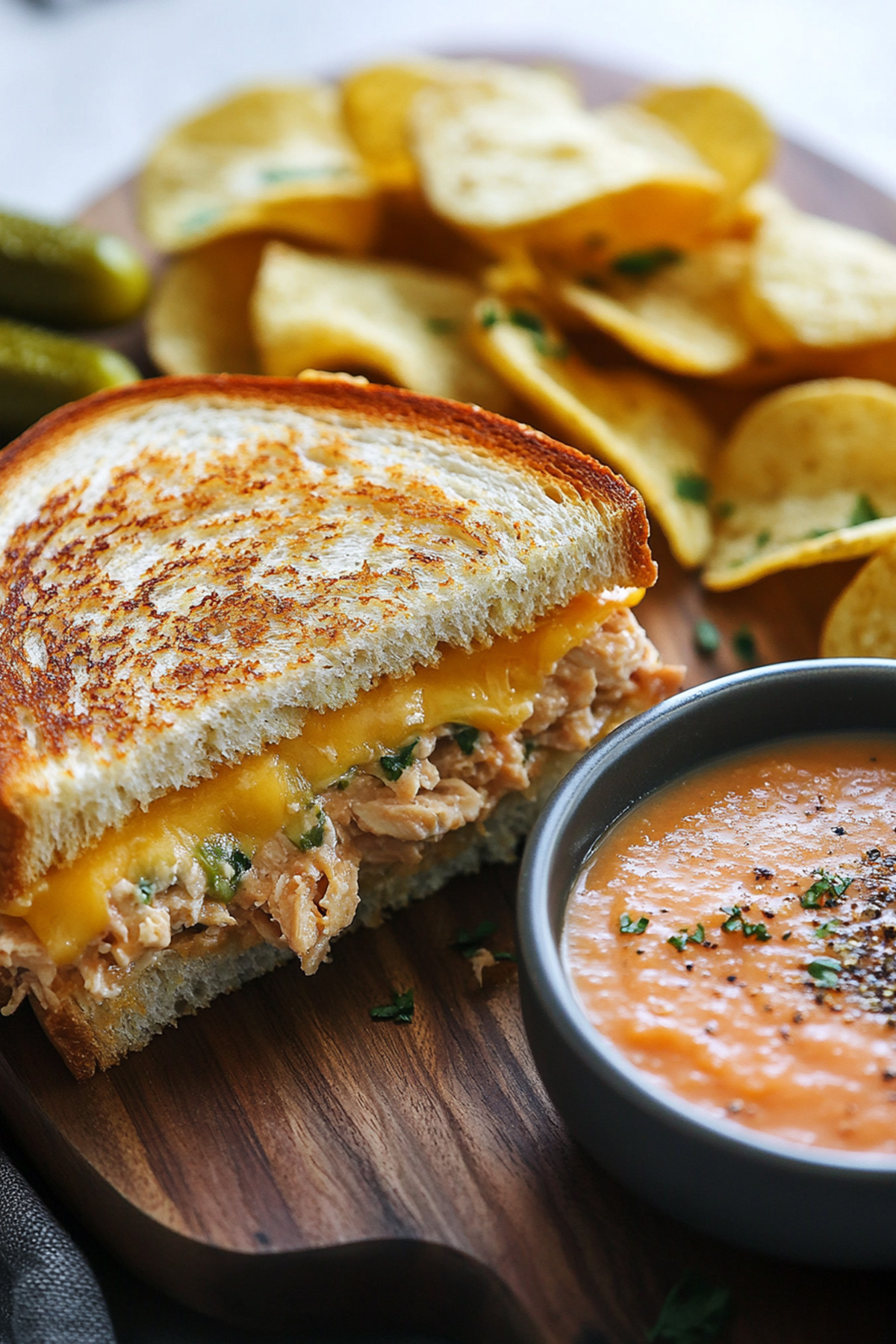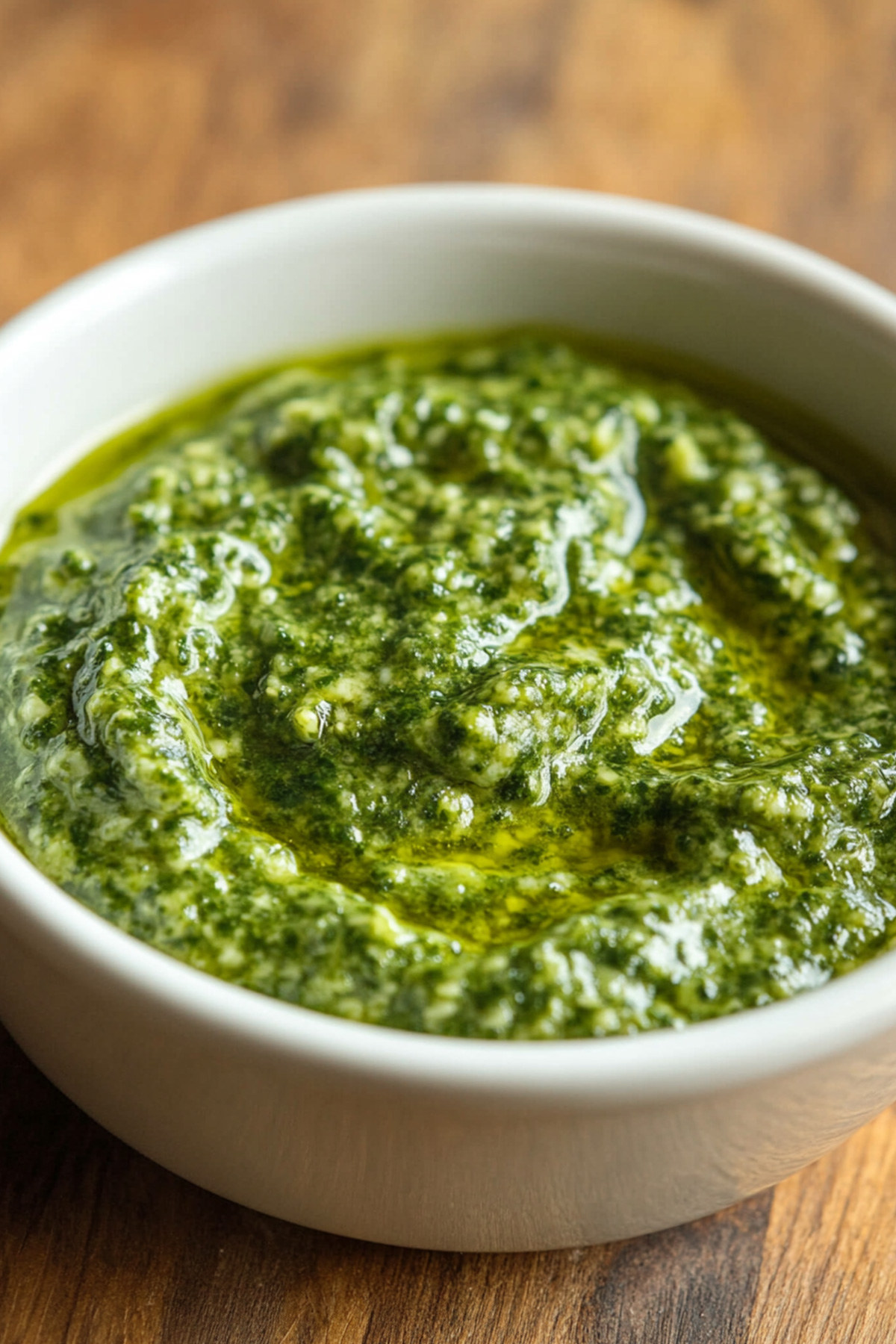Disclosure: As an Amazon Associate and participant in other affiliate programs, we earn from qualifying purchases. We only recommend products we believe will provide value to our readers.
Want to make a restaurant-quality fish dish that’s surprisingly easy at home? A perfectly baked ono recipe could be just what you need. This Hawaiian favorite, also known as wahoo, becomes tender and flaky when you bake it right in your oven.
You don’t need to be an expert cook to prepare ono fish well. This versatile fish works great with different seasonings and keeps its mild, sweet flavor that even picky eaters love.
Let us show you how to create the perfect baked ono dish in this piece. You’ll learn everything from picking the freshest fish to getting the right temperature and timing. Once you try this recipe, it will earn its place in your regular dinner lineup.
Table of Contents
Understanding Ono Fish: A Culinary Treasure
As you learn about ono fish, you’ll find a true Hawaiian treasure with a fitting name – ‘ono’ literally means “delicious” in Hawaiian and perfectly describes this remarkable fish.
Acanthocybium solandri is the scientific name for ono. It has a striking appearance with an elongated, tuna-like body that features dark blue-green coloring on top and silver sides. Its distinctive 24-30 blue bars stand out, and some show unique double Y-shapes along its sides.
Ono’s impressive nutritional profile makes it special. The fish serves as an excellent source of lean protein – a single serving contains protein that makes up 89% of its caloric value. Here are the essential nutrients:
- Contains 120 calories per serving with 26g of protein
- Provides 375mg of omega-3s per 4-ounce serving
- Rich in essential nutrients including niacin, vitamin B6, vitamin B12, phosphorus, and selenium
- Low in saturated fat and sodium
The kitchen offers endless possibilities with ono. Its mild-sweet taste and firm texture create large, circular flakes when cooked. The white flesh keeps its color during cooking. Ono filets have less blood-line than other fish, which gives you more useable portions.
This impressive fish can grow up to 8 feet in length and weigh as much as 180 pounds, though commercial catches typically range between 8-30 pounds. These powerful swimmers can reach speeds up to 47 miles per hour, making them one of the fastest fish in the sea.
Read also: Baked Rock Fish Recipe
Why Baking is the Perfect Cooking Method for Ono
Baking stands out as the perfect cooking method for your ono fish to achieve that perfect balance of moisture and flavor. Your oven’s gentle, even heat creates an ideal environment that preserves this lean fish’s delicate nature while enhancing its natural sweetness.
Here’s why baking works so wonderfully with ono:
- Precise temperature control at 375°F ensures consistent cooking
- Creates a moist cooking environment that prevents drying
- Allows for even heat distribution
- Helps preserve the fish’s natural nutrients
Baking offers a cooking method that’s not only healthy but also forgiving. Your oven’s enclosed environment creates steam that helps maintain moisture – significant for a lean fish like ono that can easily dry out.
The beauty of baking comes from its simplicity and precision. Your ono needs just 13-15 minutes in the oven until it flakes perfectly with a fork. This controlled environment lets the fish absorb your chosen marinades, sauces, or seasonings’ flavors, while the gentle heat maintains its delicate flesh’s integrity.
Baking becomes special because it creates a moist cooking environment through trapped steam. The steam transfers heat energy back into the fish effectively and helps maintain that succulent texture you want. Baking also needs minimal unhealthy additives like excess fat or salt, making it an excellent choice for health-conscious cooks.
Note that timing is significant though baking remains forgiving. Check your fish after 13 minutes to avoid overcooking. You want to achieve that perfect flaky texture while keeping the fish moist and tender.
Selecting the Best Ono for Your Recipe
Getting the timing right to buy your ono makes all the difference in creating the perfect baked dish. The fish is available throughout the year, but you’ll find the best selection during summer and fall months (May through October).
Size plays a crucial role in selecting your ono. These impressive fish can grow to over 100 pounds, but market sizes typically range between 8 to 30 pounds. This size range works great for home cooking and gives you enough meat for several servings.
Quality Indicators to Look For:
- Fresh ono should have firm, white flesh
- Look for clear, bright eyes and red gills
- Avoid fish with discoloration around the head or gill plates
- Check for any strong fishy odors (there shouldn’t be any)
Fresh ono needs quick handling since it has a relatively short shelf life of about 10 days with proper storage. The best whole fish are stored head-down to maintain quality.
Quality ono’s flesh should be white and firm, and it creates large, circular flakes after cooking. Good filets should be clear of any opacity or milky appearance – these signs indicate the fish isn’t fresh anymore.
U.S. wild-caught Pacific ono (wahoo) is an eco-friendly choice, and that’s great news for environmentally conscious cooks. U.S. regulations ensure careful management of this fish, so you can add it to your recipes with confidence. The best results come from reputable seafood markets or fishmongers who can verify the fish’s source and handling methods.
A whole fish yields about 60-65% of its weight in filets, so plan your purchase amounts based on your recipe needs. Pre-cut filets should show consistent coloring throughout, and the flesh shouldn’t have any separation or “gaping.”
Read also: Baked Tilapia Whole Fish Recipe
Preparing Ono Fish for Baking
Let’s get your ono ready for baking with the right preparation. You’ll want to set everything up before starting your baked ono recipe.
Your workspace needs proper setup first. The best results come from a clean, sanitized cutting board and the right tools. Here’s your checklist:
- Sharp filet knife.
- Clean cutting board.
- Paper towels.
- Running water.
- Bleach solution to sanitize surfaces.
- Marinade ingredients.
Cut your ono into individual portions and remove any skin. The fish needs to be completely dry – pat it down with paper towels. Room temperature fish will cook more evenly, so let it sit out a bit before cooking.
Marinating adds extra flavor to your ono, and timing is flexible. The fish tastes great at the time you marinate it for 20 minutes or leave it for up to 24 hours. This makes your ono perfect for quick dinners or planned events.
Temperature Control is Critical Note that ono is a lean fish, so watching the temperature is a vital part of cooking. The Canadian Fish Cooking Method suggests 10 minutes per inch of thickness at 400 to 450 degrees. Your fresh ono might taste better if you reduce this to 8-9 minutes per inch.
Ono can become dry if overcooked – this is one of the most significant things to watch. Keep your eyes on the fish while it bakes. You can always add more time if needed, but you can’t fix overcooked fish. Medium doneness will give a better result since ono doesn’t taste good well-done.
Similar-sized portions will help everything cook evenly. This attention to detail helps create that restaurant-quality meal you want to serve.
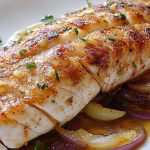
Baked Ono Recipe
- Total Time: 35 minutes
Description
Want to make an amazing baked ono dish that will wow everyone? This easy recipe brings together citrus, herbs, and butter to make a healthy and tasty meal. You can serve it for casual family dinners or special occasions.
Your fresh ono will become tender and flaky with this simple yet elegant baked dish. Citrus and herbs really improve the fish’s natural flavors and keep it perfectly moist.
Ingredients
- 400g ono (wahoo) filets.
- ½ cup olive oil.
- 2 tablespoons lemon juice.
- 2 tablespoons lime juice.
- 3 cloves minced garlic.
- 1 teaspoon Italian seasoning.
- 1 teaspoon fresh rosemary.
- Sea salt and black pepper to taste.
- ½ red onion, thinly sliced.
- Butter for basting.
Instructions
- Preheat your oven to 350°F (180°C).
- Pat your ono filets dry with paper towels.
- Mix olive oil, citrus juices, and seasonings in a bowl.
- Place filets in a greased baking dish.
- Pour the marinade mixture over the fish evenly.
- Add sliced onions and dots of butter on top.
- Cover the dish with foil.
- Bake for 15 minutes covered.
- Remove foil and broil for 5 minutes until lightly browned.
Notes
- Doneness Test: The fish should flake easily with a fork
- Easy Cleanup: Line your baking dish with foil
- Temperature Guide: Fish is done at 145°F internal temperature
- Seasoning Tip: Start with less salt and adjust as needed
- Prep Time: 15 minutes
- Cook Time: 20 minutes
- Category: Seafood
- Method: Baking
Essential Flavor Profiles for Baked Ono
Making your baked ono taste amazing comes down to finding the right flavor combinations that work with this delicate fish. You’ll get the best results from simple seasonings that let your ono’s natural sweetness take center stage.
Classic Combinations Start with the tried-and-true mix of lemon and butter – it’s your ticket to tender, flaky fish every time. Add garlic and onion powder to your seasoning blend, and you’ll improve the taste without masking the ono’s natural flavors.
Herbs can take your ono dish to new heights. Here are some winning combinations that will revolutionize your cooking:
- Fresh basil and sage to create an earthy, aromatic profile
- Dill and parsley that add balance and freshness
- Rosemary and thyme to bring a fragrant Mediterranean touch
- Marjoram that delivers a subtle sweet-savory note
Ready to give your ono a tropical twist? A vibrant marinade of soy sauce, honey, and fresh ginger might be just what you need. This Asian-inspired blend highlights the fish’s natural sweetness and adds incredible depth.
To name just one example, see how a traditional gremolata works – mix parsley, lemon zest, and garlic. Combined with a touch of olive oil, this coating infuses your ono with bright, fresh flavors.
It’s worth mentioning that balance makes all the difference. You might go minimal with seasoned salt and pepper or craft a complex marinade – let your ono’s natural taste guide you. Butter-based preparations work wonders because they seal in moisture while spreading flavor throughout the cooking process.
Read also: Grilled Ono Fish Recipe
Recommended Kitchen Tools for Baking Ono
The right kitchen tools make all the difference when you’re preparing the perfect baked ono. Let’s look at everything you need to get restaurant-quality results.
A high-quality fish spatula will be your best friend in the kitchen. Its slotted design lets drippings fall away and provides perfect support for delicate ono filets. The blade’s angled edge (74 degrees or less) gives you better control when handling fish.
Great results start with the right cutting tools. You absolutely need a sharp knife – it’s not just easier to use, but safer and more precise. You have several options:
- A thin, flexible filet knife to make precise cuts and remove skin.
- A chef’s knife for general prep work.
- A boning knife to work around bones.
A rimmed baking pan plays a vital role in your ono prep toolkit. Its raised edges keep juices from spilling during baking, and the wide surface fits large portions perfectly.
Getting the temperature right is vital for perfectly baked ono. A good oven thermometer will give a steady cooking temperature throughout baking. Pick one that’s easy to read and handles temperatures up to 500°F.
Silicone tongs are a great addition to your toolkit – they’re gentler on fish than metal ones and won’t damage non-stick surfaces. Use these with a large cutting board that fits your whole filet, and you’ll find prep work becomes quick and organized.
Note that quality tools will boost your cooking experience, but you don’t need the most expensive gear. Look for tools that last long, work precisely, and serve multiple purposes. These basic items in your kitchen will help you create beautiful baked ono every time.
Complementary Side Dishes for Baked Ono
Lift your dining experience with perfect side dishes that complement baked ono’s delicate flavor profile. The right side dish can turn a simple fish meal into an unforgettable feast.
Rice-Based Companions Lemon herb rice or garlic butter rice provides an excellent foundation for your baked ono. A more adventurous option awaits with Charleston Red Rice and its bacon and tomato-infused broth. Mediterranean Chickpea Rice brings a hearty dimension to your plate.
Your plate comes alive with these proven vegetable combinations:
- Ratatouille with fresh seasonal vegetables
- Greek-style lemon potatoes with oregano
- Crisp-tender green beans with toasted almonds
- Roasted cauliflower with tahini sauce
Tropical-inspired sides can transport you to the islands for a true Hawaiian experience. The secret lies in selecting sides that boost rather than overpower your perfectly baked ono.
A fresh green salad with shaved asparagus and edamame works great for lighter meals. Add a bright cilantro vinaigrette to create a refreshing contrast that adds nutritional value to your plate.
Classic Rice Almondine adds an elegant touch to special occasions with its buttery sautéed onions and crunchy toasted almonds. Quinoa makes an excellent gluten-free alternative, especially when you season it with kale and warming spices.
The best side dishes should complement your baked ono’s natural flavors while adding their own unique character. Balance and harmony should guide your choices, whether you prefer traditional accompaniments or creative modern sides.
Wine and Beverage Pairings
The right beverage can turn your baked ono dinner from good to extraordinary. Let’s discover drinks that pair perfectly with this delicate fish.
White Wines: A crisp white wine makes the safest choice with baked ono. This light, flaky fish creates beautiful pairings with:
- Pinot Grigio/Pinot Gris for its crisp, light profile
- Albariño with its coastal minerality
- Grüner Veltliner for its bright, citrusy notes
- Unoaked Chardonnay, particularly Chablis
Your ono’s herb and citrus preparation calls for a Sauvignon Blanc from New Zealand or the Loire Valley. Its herbaceous notes match your seasonings perfectly.
Red Wine Options You read that right! Some red wines work wonderfully with baked ono. A chilled Beaujolais or light Pinot Noir pairs well, especially when you serve the fish with robust Mediterranean herbs.
Sparkling Selections A blanc de blancs Champagne or French crémant adds elegance to your meal. The bubbles and high acidity work magic with baked fish. They cut through any richness while preserving the delicate flavors.
Non-Alcoholic Alternatives Skipping alcohol doesn’t limit your choices. Modern non-alcoholic options offer sophisticated alternatives. A tropical mocktail with coconut water, fresh citrus, and sparkling water works well. These refreshing combinations complement your ono’s natural sweetness and add a festive touch to your meal.
Balance creates the perfect pairing. Your beverage choice should improve rather than overwhelm your carefully prepared ono. The best pairings complement both the fish and your chosen preparation method, creating a harmonious dining experience.
Common Mistakes to Avoid When Baking Ono
Many cooks face common pitfalls that affect their ono’s perfect bake. You might make these mistakes even with experience, but the right knowledge will give you the tools to avoid them.
Temperature Control is Significant Overcooking your ono stands as the most vital mistake to avoid. This lean fish dries quickly if it stays too long in the oven. The standard calls for 10 minutes per inch at 400-450°F, but fresh fish needs 8-9 minutes per inch to achieve the best results.
The Right Heat Level Ono gives its best results with medium-high heat – higher temperatures lead to dryness. The fish should reach medium to medium-well doneness because ono doesn’t suit well-done cooking.
These tips will lead you to success:
- Your fish needs a thorough pat-dry before cooking
- The right seasoning time prevents moisture loss
- Your pan needs 3-5 minutes of preheating
- Room temperature fish cooks better
- Watch your cooking time closely
The Preparation Process Proper drying makes a huge difference, yet many cooks skip this step. A wet fish steams instead of searing, which changes its texture. Paper towels help pat your ono dry. The fish needs to rest uncovered in the refrigerator for 30 minutes before cooking.
Timing Matters The seasoning’s timing plays a key role. Early seasoning pulls out moisture and makes the fish mushy. The best approach seasons one side at 80% cooking completion, followed by the other side after cooking.
Your fish needs undisturbed cooking time. The first few minutes develop a proper sear that ensures even cooking. The flesh should look opaque rather than translucent to check doneness.
Aluminum foil helps trap steam and speeds up cooking to give foolproof results. A light touch with salt and pepper works best – you can add more seasoning later if needed.
Nutritional Breakdown of Baked Ono
Baked ono stands out as a delicious seafood choice that packs amazing nutritional benefits while helping you stay on track with your diet. This lean fish delivers high protein content without loading up on calories.
A closer look at baked ono’s nutrition reveals some impressive numbers. Each standard serving contains just 120 calories, perfect if you’re counting calories. The protein content will blow you away – 89% of calories come from protein, giving you 26g of protein in each serving.
The macronutrient breakdown shows why this fish is a protein powerhouse:
- 11% fat content
- 0% carbohydrates
- 89% protein
This versatile fish gives you more than just protein. Baked ono comes loaded with nutrients that boost your health:
- Rich in niacin and vitamin B6
- Excellent source of vitamin B12
- High in phosphorus and selenium
- Contains approximately 375mg of omega-3 fatty acids per 4-ounce serving
Your low-sodium diet gets a friend in baked ono. Each serving contains only 25mg of sodium, making it a great choice if you’re watching your salt intake.
The mineral content adds even more value to each serving. You’ll get 12% of your daily potassium needs along with other essential minerals. The best part? All these nutrients come with only 2g of total fat and 1g of saturated fat.
Baking preserves these nutritional perks while keeping extra fats minimal. This cooking method helps ono remain an extra lean protein source that fits perfectly into a healthy diet without sacrificing taste.
References:
– EatThisMuch
Storing and Reheating Leftover Baked Ono
The best way to enjoy leftover baked ono involves proper storage methods. You can savor this delicious fish across several meals without compromising its quality or safety if stored correctly.
Proper Storage Techniques Your leftover baked ono should be placed in an airtight container in the refrigerator and keep taking them for 3-4 days. The fish needs to cool completely before storage, but shouldn’t stay at room temperature beyond two hours.
These storage tips help maintain freshness:
- Keep the fish’s flesh dry to prevent bacterial growth
- Store filets in a single layer to minimize moisture exposure
- Place in a zip-top bag with all air pressed out
- Use ice or ice packs to maintain optimal temperature
Freezing Options Freezing might affect the texture but serves as an alternative for longer storage periods. Individual serving sizes work best – you’ll only need to thaw what you plan to eat.
Reheating Your Baked Ono Low, gentle heat preserves your fish’s moisture and flavor during reheating. The best method involves reheating in the oven at 275°F to 350°F (never higher!). A foil cover protects the fish, and regular checks ensure it warms to your preference.
The microwave offers a quick alternative – set it to 30-40% power and heat in 30-second intervals. A cover helps retain moisture and controls fishy odors effectively.
Pro Tip: High heat quickly dries out fish and creates poor texture. Note that reheated fish won’t match its fresh-cooked taste, but proper techniques help preserve its quality substantially.
Variations and Creative Twists on Baked Ono
Ready to make the classic baked ono recipe your own? These creative variations will take your fish from fantastic to extraordinary.
Parmesan Panko Paradise A crispy parmesan panko crust adds incredible texture to your baked ono. The panko mixture spread on top of your fish needs a brief sear to achieve that perfect golden-brown crust. Your dinner guests will be impressed by this simple yet elegant variation.
Mediterranean Magic A vibrant gremolata topping gives your ono a Mediterranean twist. The zesty blend of parsley, garlic, and lemon creates bright, fresh flavors that complement the fish’s natural sweetness. A drizzle of lemon olive oil over the top adds an extra touch of richness before serving.
Asian-Inspired Elegance A honey soy glaze brings out ono’s natural flavors beautifully. Fresh pineapple salsa pairs wonderfully with this variation and creates a perfect balance of sweet and savory notes. A quick 2-3 minute sear on each side delivers medium-rare perfection.
Versatile Substitutions The recipe adapts beautifully to other fish if fresh ono isn’t available:
- Mahi-mahi for a similar texture.
- Opah for a rich, buttery taste.
- Halibut for a delicate flavor.
Sauce Sensations These complementary sauces will lift your baked ono:
- Sriracha mayo for a spicy kick.
- Wasabi mayo for Japanese flair.
- Garlicky balsamic for Mediterranean flair.
The sort of thing I love is stuffing ono with a mixture of Portuguese sausage, Chinese sausage, and fresh herbs. This island-style combination brings delightful fusion flavors that transport your taste buds straight to Hawaii.
These variations are just starting points – you can experiment and make them your own. A perfect variation exists for every taste, whether you crave something crispy, zesty, or packed with island flavors.
Read also: Red Snapper Fish Recipe
Frequently Asked Questions About Ono Fish
Let’s tackle some common questions you might have about ono fish.
Are Ono and Wahoo the Same Fish? They’re similar! People in Hawaii call it ono (which means “good to eat”) while others know it as wahoo. Some regions even call it Pacific kingfish.
What About Mercury Levels? This deserves careful thought. Ono contains moderate to high levels of mercury. Pregnant women, nursing mothers, and young children should eat it only once every two weeks. Others can safely enjoy it twice per month.
Is Ono Healthy to Eat? You bet! Each serving of ono packs a nutritious punch. Here’s what you get:
- 375mg of omega-3 fatty acids per 4-ounce serving
- Rich in niacin, vitamin B6, and vitamin B12
- High in phosphorus and selenium
- Low in saturated fat and sodium
Can I Eat Ono Raw? Raw ono works great in sushi or sashimi dishes. The fish needs to be fresh and properly bled to avoid any fishy or bloody taste. Your best raw experience depends on proper handling and storage.
What’s the Best Substitute for Ono? Can’t find ono? Try these alternatives:
- Mahi-mahi (though texture is different)
- Chilean sea bass
- Alaskan halibut
How Long Does Fresh Ono Last? Fresh ono won’t last long. You should cook and eat it within a few days of purchase. Proper bleeding and icing are vital to maintain quality if you catch it yourself.
Can Cooking Remove Mercury? No cooking method can reduce mercury levels in fish. But don’t let this stop you from enjoying ono. Just stick to the recommended consumption guidelines and you’ll be fine.
Note that moderation makes all the difference. You can safely enjoy this fantastic fish as part of your regular meals if you follow these guidelines and prepare it properly.
Conclusion: Mastering the Art of Baked Ono
Baked ono makes a fantastic addition to your dinner options. The right techniques and temperature control will help you create restaurant-quality fish dishes that highlight ono’s sweet, delicate flavor.
Your success depends on picking fresh fish, using proper prep methods, and getting the temperature just right. Note that low heat keeps the moisture while letting seasonings and marinades boost the fish’s natural taste.
Becoming skilled at this Hawaiian favorite lets you explore countless creative variations – from Mediterranean-inspired dishes to Asian fusion creations. You can serve it with tropical sides for an island experience or pair it with a crisp white wine for an elegant dinner. Baked ono delivers great nutrition and satisfaction.
Simple preparations help build your confidence. Later, you can try different seasoning combinations and cooking times to create your perfect version of this remarkable fish. Baked ono will soon become your favorite choice for both weeknight meals and special occasions.

